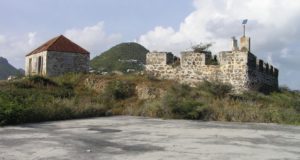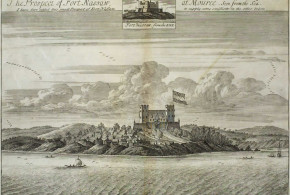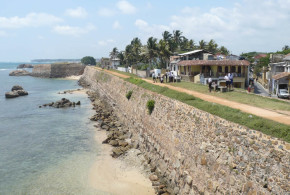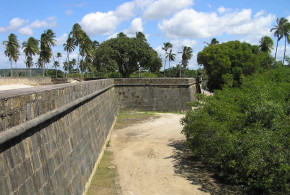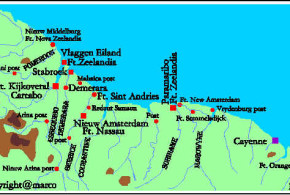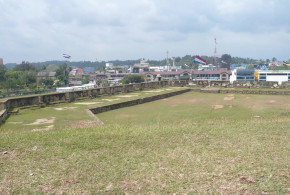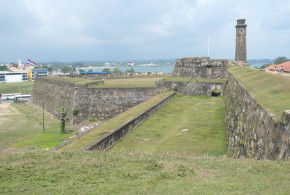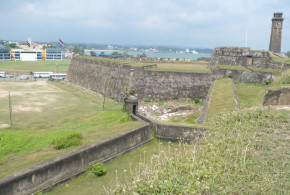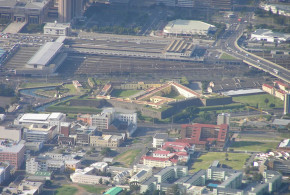Written by Marco Ramerini. English text revision by Dietrich Köster.
DUTCH EMPIRE: INDIA
INDIA, GENERAL:
– Gupta, Ashin Das, “Merchants of maritime India, 1500-1800”, 326 pp., illustrations, Aldershot, Variorum, 1994, Brookfield, Vermont, USA. Contents: Preface: Indian merchants and the trade in the Indian Ocean, ca. 1500-1750; India and the Indian Ocean, 1500-1800: the story; The maritime merchant [of medieval India], ca. 1500-1800; The changing face of the Indian maritime merchant; Indian merchants and the Western Indian Ocean: the early 17th century; Trade and politics in the 18th century-India; India and the Indian Ocean in the 18th century; Malabar in 1740; The crisis at Surat, 1730-1732; The merchants of Surat, ca. 1700-1750; Gujarati merchants and the Red Sea trade, 1700-1725; A note on the shipowning merchants of Surat, ca. 1700; The broker at Mughal Surat, ca. 1740; Indian merchants in the age of partnership, 1500-1800; Some problems of reconstructing the history of India’s West Coast from European sources; The maritime city; Index.
– Floor, William, “The Dutch East India Company (VOC) and Diewel-Sind (Pakistan) in the 17th & 18th century”, vi, 97 pp., series No.16, University of Karachi, Institute of Central & West Asian Studies, 1993, Karachi/Islamabad, Pakistan. The Dutch Trade in Sind in Historical Perspective; The Dutch East Indian Company (VOC) & Diewel-Sind (Pakistan) in the 17th & 18th century; The Report on Trade in Sind, 1757.
– Kail, O. C., “The Dutch in India”, 225 pp., maps and illustrations, MacMillian India Limited, 1991, Delhi, India.
– Prakash, Om, “The Dutch factories in India 1617-1623. A collection of Dutch East India Company documents pertaining to India”, XXIV, 332 pp., Munshiram Monoharlal Publishers, 1984, New Delhi, India.
– van Santen , H. W., “VOC sites in India: monuments to decay and neglect”, Article in the Internet.
– Winius, G. D. and Vink, M., “The merchant-warrior pacified, the VOC and its changing political economy in India”, 201 pp., illustrations, Oxford University Press, 1991, Delhi, India.
WEST INDIA, MALABAR COAST:
– Various Authors, “List of European & C. tombs in the Malabar district”, 44 pp., Malabar Collectorate press 1894 Calicut
– Alexander, P.C., “The Dutch in Malabar”, 217 pp., Annamalai University 1946, Annamalainagar, India
– Baldaeus, Philip, “A Description of East India Coasts of Malabar and Coromandel and also of the Isle of Ceylon”, 360 pp., maps, Reprint of the 1703 edition, Asian Educational Services, 1996, New Delhi-Madras, India. Translated from High Dutch in 1672; this book gives a description of the East Indian Coasts of Malabar, the Coromandel and the Island of Ceylon together with details of all the adjacent Kingdoms, Principalities, Provinces, Cities, Chief harbours, Structures, Pagan Temples, products, and living creatures. It also details the manners, habits, economies and ceremonies of the inhabitants as well as the warlike exploits, sieges, sea and field engagements between the Portuguese and Dutch.
– Cunes, Fredrik, “Memoir of Commander Frederik Cunes delivered to his successor Caspar de Jong on the 31st December 1756”, 36 pp., selection from the Records of the Madras Government. Dutch Records, No. 3, Government Press, 1908, Madras, India.
– Galletti A. & Stein van Gollenesse J.V., “The Dutch in Malabar: being a translation of Selections ns 1 and 2”, 269 pp., Selections from the Records of the Madras Government, Dutch records, no. 13, printed by the Superintendent, Government Press, 1911, Madras, India
– Iyer, S. Krishna, “Travancore-Dutch relations 1729-1741”, 101 pp., maps, CBH Publications, 1995, Trivandrum, India. The history of Travancore during its formative period, focussing upon its emergence as a powerful independent State in the 18th century and the decline of the Dutch as power in Malabar.
– Jacob, Hugo K., “De Nederlanders in Kerala, 1663-1701: de memories en instructies betreffende het commandement Malabar van de Verenigde Oost-Indische Compagnie”, xcii, 437 pp., illustrations, Proefschrift Leiden ; Rijks geschiedkundige publicatien, Kleine serie, 4, 1976.
– Jacob, Hugo K., “Rajas of Cochin, 1663-1720: Kings, Chiefs and the Dutch East India Company”, 156 pp., maps, illustrations, Munshiram Monoharlal Publishers, 2000, New Delhi, India.
– Koshy, M.O., “The Dutch power in Kerala 1729-1758”, 334 pp. 2 maps, Mittal Publications, 1989, New Delhi, India. Index: The rise of the Dutch power in Kerala 1604-1663, the early history of the Dutch settlements in Kerala 1663-1728, the Dutch involvement in the regional power politics of Kerala, the confrontation at Colachel, the treaty of Mavelikara, the Dutch and the Zamorins of Calicut, the Dutch and the Kingdom of Kolattiri, the Dutch and the other European powers, the Dutch trade in Kerala, the administrative system of the Dutch East India Company and its policy in Kerala, the Dutch impact on Kerala.
– Lannoy M. E. J. de “De Nederlanders te Malabar en de expansie van Travancore: over de rol die de Nederlanders speelden bij de totstandkoming van een ‘moderne’ staat als Travancore in de tweede helft van de 18e eeuw”, 60 pp., Rijksuniversiteit, 1989, Leiden, The Netherlands.
– Lannoy, Mark de, “The Kulasekhar Perumals of Travancore. History and State Formation in Travancore from 1671 to 1758”, vii + 247 pp., Leiden, Research School CNWS, School of Asian, African and Amerindian Studies, 1997, Leiden, The Netherlands.
– Meyer, Raphael, “The Jews of Cochin”, Internet article American Asian Kashrus Services, 1995
– Panikkar K., “Malabar and the Dutch: being the history of the fall of the Nayar power in Malabar”, XXII, 187 pp., D.B. Taraporevala Sons & Co, 1931, Bombay, India.
– Panikkar, K. M., “A History of Kerala 1498-1801”, 467 pp., The Annamalai University, 1960, Annamalaingar, India.
– Poonen, T.I., “Dutch hegemony in Malabar and its collapse 1663 – 1795”, 238 pp., Department of Publications, University of Kerala, 1978, Trivandrum, India.
– Poonen, T.I., “A survey of the rise of the Dutch power in Malabar 1603-1678”, xxiii + 303 pp., illustrations, St. Joseph’s Industrial School Press, 1948, Trichinopoly, India.
– Poonen, T. I., “Dutch beginnings in India proper 1580-1615”, 70 pp., University of Madras, 1933, Madras, India.
– Radwan, A. Bos, “The Dutch in western India 1601 – 1632: a study of mutual accomodation”, x + 159 pp., Firma KLM, 1978, Calcutta, India.
– Rajendran, N., “Establishment of British Power In Malabar, 1664 to 1799”, Chugh Publications, 1979, Allahabad, India.
– Ramachandran, Vaidyanadhan, “Communication History of the Dutch in India”, 46 pp., Artline Printers, 1997, Madras, India.
– Reede tot Drakenstein, Henrik A. Heniger J., “Hendrik Adriaan van Reede tot Drakenstein (1636-1691) and Hortus Malabaricus. A contribution to the history of Dutch colonial botany”, xvi, 295 pp. 85, figures, 1986, Rotterdam & Boston.
– Roelofsz, M.A.P., “De vestiging der Nederlanders ter kuste Malabar”, iv, 396 pp., 3 maps and 13 illustrations. Verhandelingen van het Koninklijk Instituut voor Taal-, Land- en Volkenkunde, n° 4, Martinus Nijhoff, 1943, ‘s-Gravenhage, The Netherlands.
– Segal, J. B. “A History of the Jews of Cochin” 134 pp. International Specialized Book Services, 1993
– Stein van Gollenesse J.V. “Memoir on the Malabar coast, composed in the year 1743 AD” 38 pp. Selections from the records of the Madras Government. Dutch records ; no. 1 Government Press 1908 Madras, India.
– van Angelbeek, J.G., “Memoir of Johan Gerard van Angelbeek, delivered to his successor in the administration of Malabar, Jan Lambertus van Spall in the year 1793”, 18 pp., Selections from the records of the Madras Government. Dutch records, no. 4, Government Press, 1908, Madras
– van Santen, H.W., “De Verenigde Oostindische Compagnie in Gujarat en Hindustan, 1620-1660”, 1982, Mappel.
EAST INDIA, COROMANDEL COAST AND BAY OF BENGAL:
– Various Authors, “Commerce and Culture in the Bay of Bengal, 1500-1800”, 416 pp., plates, edited by Om Prakash and Denys Lombard, 1999. Index: 1. Rivalry and competition in the Bay of Bengal in the eleventh century and its bearing on Indian Ocean Studies, by Hermann Kulke. 2. Trade between South India and China, 1368-1644, by Haraprasad Ray. 3. ‘Persianization’ and ‘Mercantilism’: two themes in Bay of Bengal History, 1400-1700, by Sanjay Subrahmanyam. 4. Religious and scholarly exchanges between the Singhalese Sangha and the Arakanese and Burmese Theravadin Communities: historical documentation and physical evidence, by Catherine Raymond. 5. Portuguese control over the Arabian sea and the Bay of Bengal: a comparative study, by Luís Filipe F.R. Thomaz. 6. Banten and the Bay of Bengal during the sixteenth and seventeenth centuries, by Claude Guillot. 7. The Indian world as seen from Acheh in the seventeenth century, by Denys Lombard. 8. The French establishment in Bengal: challenges and responses, 1674-1719, by Aniruddha Ray. 9. Indian entrepreneurs and maritime trade in the Bay of Bengal during the eighteenth century with special reference to Ananda Ranga Pillai, by K.S. Mathew. 10. From hostility to collaboration: European corporate enterprise and private trade in the Bay of Bengal, 1500-1800, by Om Prakash. 11. British capital for the VOC in Bengal, by Femme S. Gaastra. 12. The Chulia Merchants of southern coromandel in the eighteenth century: a case for continuity, by Bhaswati Bhattacharya. 13. Coromandel’s Bay of Bengal trade, 1740-1800: a study of continuities and changes, by S. Arasaratnam. 14. Markets, bullion and Bengal’s commercial economy: an eighteenth century perspective by Rajat Datta. 15. Syncretic symbolism and textiles: Indo-Thai expressions, by Lotika Varadarajan. 16. Bengal as reflected in two South-East Asian Travelogues from the early nineteenth century, by Claudine Salmon.
– Arasaratnam, S., “The Dutch East India Company and its Coromandel trade, 1700-1740”, in: “An Expanding World”, Vol. n° 10. Prakash, Om, “European commercial expansion in early modern Asia”, pp. 129-150. Also in: “Bijdragen tot de Taal-, Land- en Volkenkunde” CXXIII, n° 3, Leiden, 1967, pp. 325-346.
– Arasaratnam, Sinnappah, “The Coromandel-Southeast Asia Trade 1650-1740”, in: “Journal of Asian History, Vol. 18, 1984; pp. 113-135.
– Arasaratnam, S. “Merchants, Companies and Commerce on the Coromandel Coast, 1650-1740, 1986, Delhi, India.
– Arasaratnam, S. and Aniruddha, R., “Masulipatnam and Cambay: a history of two port towns, 1500-1800”, xiii, 314pp., maps Munshiram Manoharlal, 1994, New Delhi, India.
– Caldwell, R. Bishop “Tuticorin under the Dutch”, in: Caldwell, R. Bishop “A history of Tinnevelly” pp. 78-84 Asian Educational Services, Reprint 1982, India. (wanting)
– Lohuizen, J. van “The Dutch East India Company and Mysore1762-1790” viii+205 pp. Verhandelingen van het Koninklijk Instituut voor Taal- Land- en Volkenkunde, Deel XXXI, Martinus Nijhoff, 1961, s-Gravenhage, The Netherlands. Contents: The Dutch & Haidar Ali, 1762 – 1766; From One Embassy to Another,1766-1775; Years of Growing Estrangement & Hostilities, 1775-1781; War with the British, 1781 – 1783; The Dutch & Tipu Sultan 1784-1790; Conclusion; Appendices: The Origin of the Nair Rebellion of 1766; The Conquest of Coorg & Calicut in 1773-1774; The Mysorean-Dutch Agreement of 1781. – Poonen, T. I., “Early history of the Dutch factories of Masulipatam and Petapoli 1605-1636”, 1937, India.
– Prakash, Om, “The Dutch East India Company and the economy of Bengal 1630 – 1720”, XII, 291 pp., illustrations, Princeton University Press, 1985, Princeton, New Jersey, USA
– Raychaudhuri, T., “Jan Company in Coromandel 1605-1690. A study in the interrelation of European commerce and traditional economies”, xi,230 pp., 2 maps [Verhandelingen van het Koninklijk Instituut voor Taal-, Land- en Volkenkunde 38] Nijhoff, 1962, The Netherlands. Index: The first phase 1605-1629, a period of expansion 1630-1658, from prosperity to decay 1659-1690, trade with other regions, rivals’ trade, the export trade: problems and trends, the items of export, the import trade, administration and social life, a resumé, Directors and Governors of the Dutch factories in Coromandel, profit & loss account of the Dutch factories under the Coromandel government 1626-1690, a note on some varieties of Coromandel cloth, currency and weights.
– Rea, Alexander “Monumental remains of the Dutch East India Company in the Presidency of Madras” ?, x, 80 pp., 63 Plates, Archaeological survey of India – New Imperial series, vol. XXV, 1998, (Reprint Madras 1897 edition).
– Terpstra, H., “De vestiging van de Nederlanders aan de kust van Koromandel”, 1911, Groningen, The Netherlands.
– van Goor, Jurrien, “Dutch ‘Calvinists’ on the Coromandel Coast and in Sri Lanka”, in: “Asia and Europe: commerce, colonialism and cultures: essays in honour of Sinnappah Arasaratnam”, 133-142 pp., editors M.N. Pearson and I.B. Watson, Armidale, Australia: South Asia Studies Association, 1996.
 Colonial Voyage The website dedicated to the Colonial History
Colonial Voyage The website dedicated to the Colonial History





